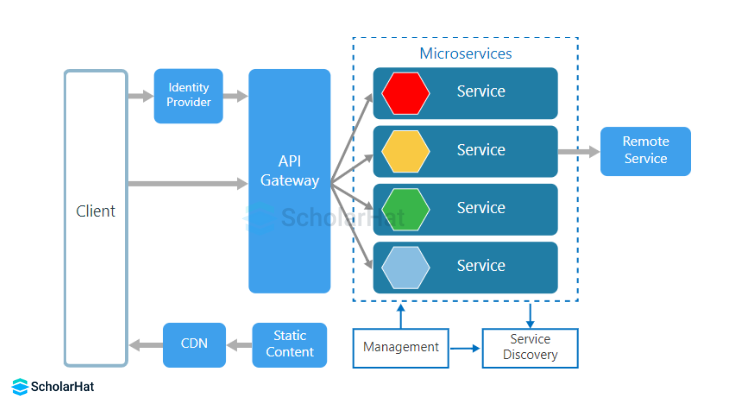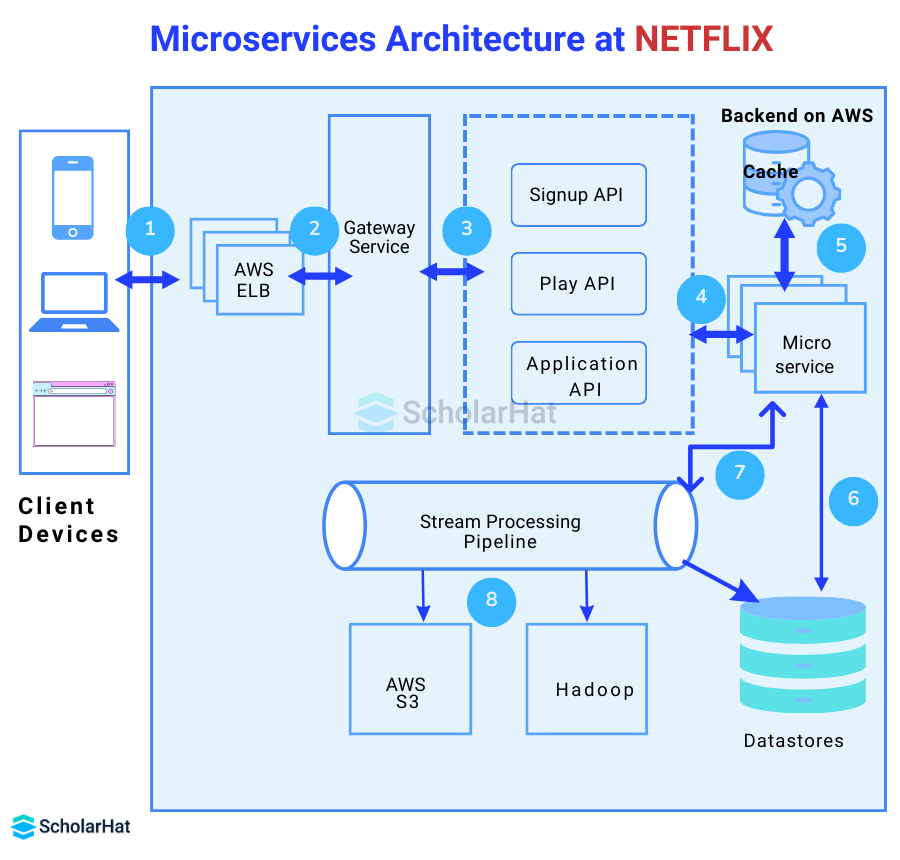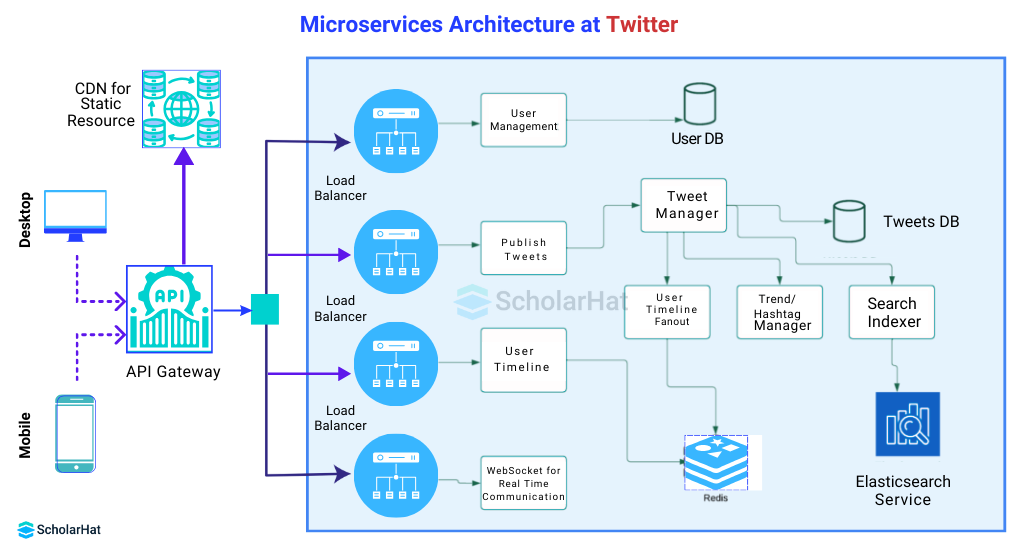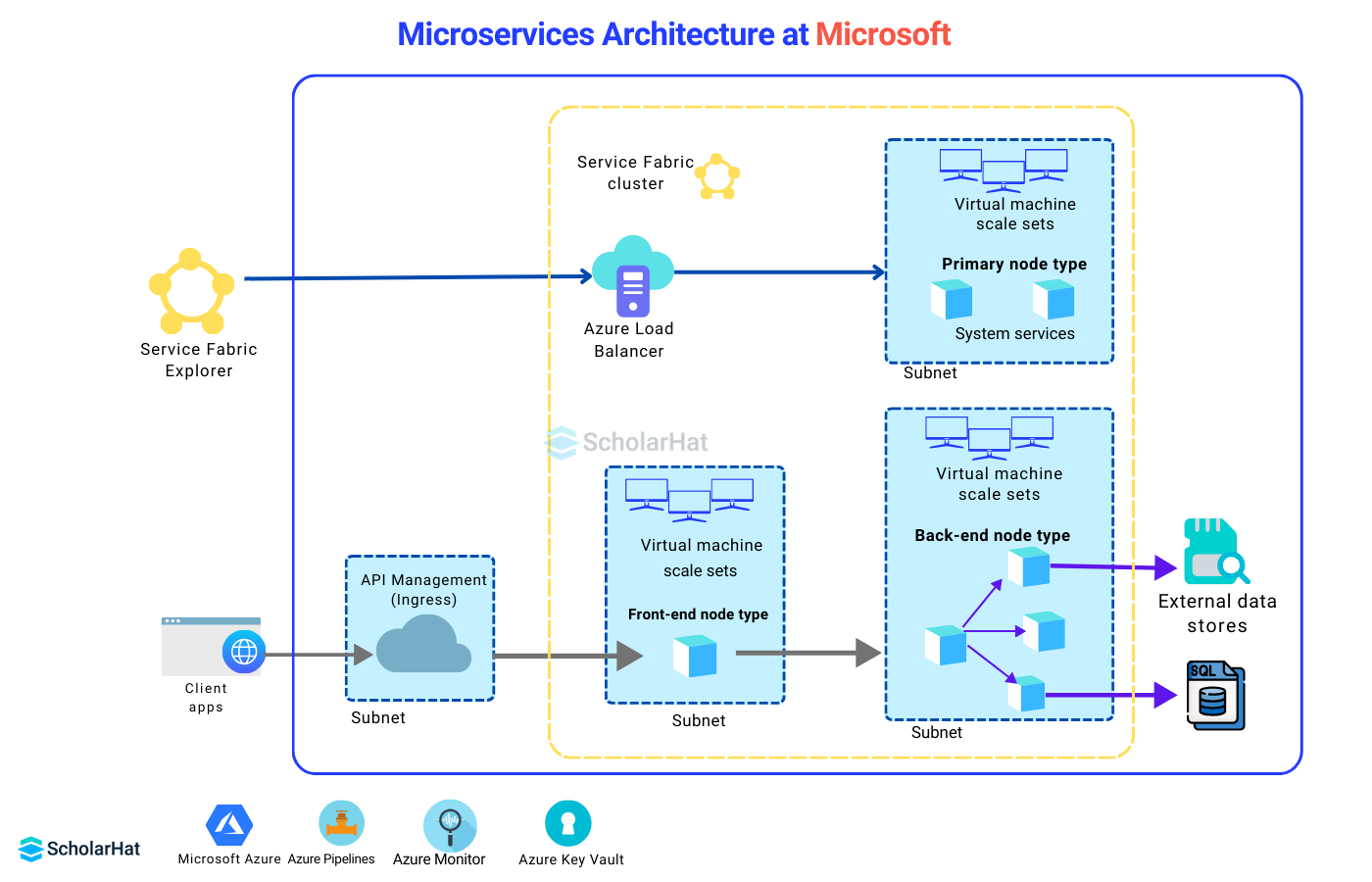10
meiWhy 73% Big Companies are using Microservices Architecture?
73% of Big Companies Are Using Microservices Architecture: An Overview
In this AI-driven technology world, Microservices Architecture has become a trending topic, everyone is using and talking about. It is one of those architectural patterns that has emerged from the world of domain-driven design, continuous delivery, platform and infrastructure automation, polyglot programming, and scalable systems. As per one of the reports, 73% of firms are using or planning to use microservices. In this Microservices tutorial, we will understand microservice architecture and how it's driving today's industries.
What is Microservice Architecture?
An architectural style that structures an application as a collection of small self-contained processes, modeled around a business capability. They don’t share the data structure and will be communicating through APIs. While in a monolithic application, all the components are in a single module, in microservices we can see all the components are divided into separate modules and communication happens with each other with the help of APIs. In Microservices Architecture the data is federated where each microservice is responsible for its data model and data.

Why Should You Use Microservice Architecture?
- Increased development speed: Microservices are often small in size, therefore, adding new features to them is usually faster.
- Separate components: The components here are not that tightly bound to each other. These components can easily be developed, replaced, and scaled individually. Microservices support agility and innovation.
- Application scaling: In this architecture, the failure of one is less likely to cause a cascading system failure. Even when microservices invoke other services synchronously, developers can stop failure cascades by implementing features like “Circuit Breaker” to prevent the calling service from using up system resources while waiting for an unresponsive service. Here, you have the privilege of horizontal scaling within seconds, if they are carefully deployed using Kubernetes, Docker, or other infrastructure.
- Change technology stack with ease: The application development companies can easily change the technology stack and avail larger benefits at the same time. Microservices allow for technology diversity, meaning different services can be implemented using different programming languages, frameworks, and databases. Teams can choose the best tools for the specific requirements of their service.
- Development scaling: As microservice can be developed independently, developer scalability is much higher. When implementing a microservices architecture, managers can break down the development of each microservice into smaller and more manageable tasks that can be handled by smaller teams. This lets the teams work independently without waiting for other teams to finish their work, reducing concerns about coding conflicts.
Also, you can outsource the development of specific microservices to external vendors or utilize prebuilt SaaS microservices to complete their applications. By leveraging these strategies, organizations can speed up development and reduce the time-to-market for their applications.
- A DevOps-friendly architecture: Since application tweaks and upgrades happen faster and easier, the microservices model supports a DevOps-friendly philosophy. Users offer feedback and requests and quickly see their feedback implemented in the next upgrade.
- Easy to understand: In a distributed environment wherein some of the team members are geographically dispersed, microservice architecture can help the DevOps team understand the entire functionality of a service as it is not built on a single package.
How Big Companies Are Using Microservice Architecture to Their Advantage?
Let us now see how the top companies are making use of this architectural pattern to their advantage:
- Netflix: It has a highly scalable and resilient microservices architecture. It handles various functions, such as recommendation engines, content delivery, user authentication, and billing. The architecture allows for continuous deployment, enabling rapid updates and improvements to the platform.

- Amazon: It has a vast and complex microservices architecture supporting its e-commerce platform, AWS, and other services. It enables teams to work independently on their services, leading to faster innovation and release cycles.
- Spotify: This company uses microservices to power its music streaming platform. It enables features such as personalized playlists, recommendations, and social sharing.

- Uber: Here, microservices handle functions such as user authentication, driver matching, real-time tracking, and payment processing. The architecture allows for rapid development, scalability, and the ability to introduce new features independently.

- eShop: The eShopOnContainers application represents an online store that sells various physical products like t-shirts and coffee mugs. The application's functionality is broken up into many distinct microservices. There are services responsible for authentication and identity, listing items from the product catalog, managing users' shopping baskets, and placing orders.

- Twitter: The microservices architecture handles its real-time social media platform functions like tweet processing, user authentication, and real-time notifications.

- Etsy: Microservices at Etsy handle functions like product search, inventory management, and payment processing. The architecture allows for flexibility, and teams can independently develop and deploy their services.

- Microsoft: It has adopted microservices for various services, including Azure and Office 365. It enables the development and deployment of cloud services with scalability and modularity. The architecture supports a diverse range of services and applications across different business units.

Disadvantages of Microservice Architecture
- Increased complexity in development and operations due to distributed nature
- Challenges in data consistency across services
- Overhead in managing inter-service communication
- Potential for duplicated efforts in service development
- Higher operational overhead in monitoring and maintaining a large number of services.
Should You Go For Microservice Architecture?
Microservices is a very useful tool for the mobile app development process. For large enterprises, microservice architecture is the only way to tackle complexity and to get an edge over the competition. For startups and small businesses, microservices in mobile app development can bring long-term benefits.
FAQs
Q1. What is a microservice architecture?
Q2. Is microservices a good choice for your business?
Q3. What are some of the steps to implement Microservices Architecture?
- Define Business Goals
- Decompose the Monolith
- Service Identification
- Define Service Contracts
- Technology Stack
Take our free skill tests to evaluate your skill!

In less than 5 minutes, with our skill test, you can identify your knowledge gaps and strengths.




